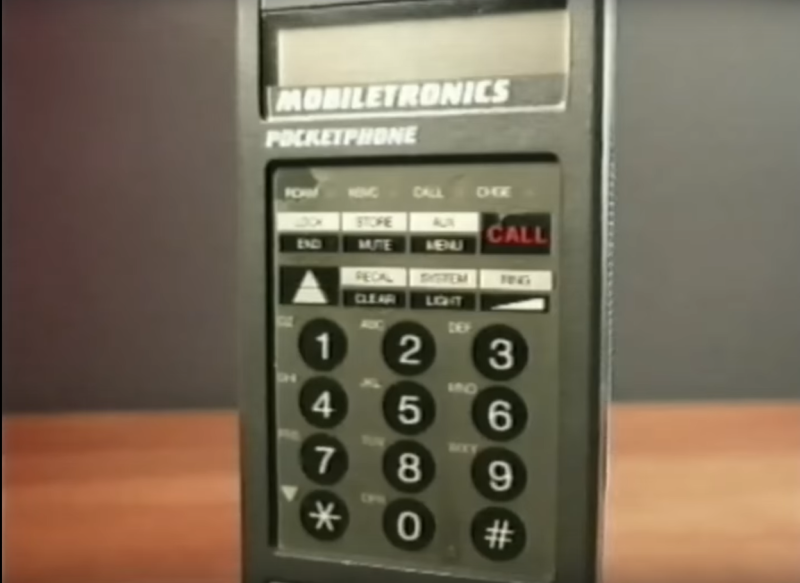It might seem quaint through the lends of history we have the luxury of looking through, but in the mid 1980s it was a major symbol of status to be able to communicate on-the-go. Car phones and pagers were cutting-edge devices of the time, and even though there were some mobile cellular telephones, they were behemoths compared to anything we would recognize as a cell phone today. It wasn’t until 1985 that a cell phone was able to fit in a pocket, and that first device wasn’t just revolutionary because of its size. It made a number of technological advancements that were extremely impressive for its time, and [Janus Cycle] takes us through some of those in this teardown video.
The Technophone came to us from Great Britain by way of a former Ericsson engineer named Nils Mårtensson. It was able to achieve its relatively small stature using a surface-mount PCB, which was a cutting-edge manufacturing process for the time. Not only did it use surface-mount components and boards, but the PCB itself has 12 layers and two sides and hosts two custom Technophone chips. The phone is relatively modular as well, with the screen, battery pack, and other components capable of easily disconnecting from the main board.
Some cleanup of the phone was needed after the teardown, but after removing some corrosion and replacing the nickel-cadmium battery with a few AA batteries, the phone was able to power on. There were some other surprises to find here as well. The phone includes an extensive menu, another rarity among mobile phones of the era, a fairly comprehensive set of setup and troubleshooting tools, and even hints that its EEPROM was at some point or other erased and given a software upgrade.
Since the mobile network technology that would have supported a phone like this has long since faded into obscurity, [Janus Cycle] was able to find a text file to open up some developer options, shared on BBS message boards in the early days of the Internet by people then known as phreakers. It’s an early example of cracking a mobile phone, which is interesting on its own, and the amount of tools available to those working on these devices further illustrates how far ahead these devices were in 1985.
Thanks to [Michael] for the tip!















I was Junior Engineer for an FM/AM station back in 1981. The station owner had Mobilphones in his Car and Blazer and they looked like regular Telephones. I used the one in the Blazer when my Truck was being serviced
Those were probably radiotelephones, a service that was a precursor to cellular networks. They usually had only one VHF tower using analog AM technologies in a metropolitan area. More akin to the “autopatch” feature available on many amateur radio repeaters. Funny thing was, on the edge of their coverage areas, they were more reliable than many modern digital services since analog’s failure mode is fading signal and digital failure modes are “you have it until you don’t”… one with a good ear could have the system be functional far outside where it should be.
Interesting post, takes me back – those were the days had a Philips PCR40 IIRC the one with the lift up short antenna and 16 button SMS on NiCds – sold it, then about 3 months later the buyer had the batteries overheat in his back pocket – hot stuff yikes !
And reminds me, I have about 3 off proper telco CDMA transceivers from discontinued Australian model from Telstra usage, taken off poles can handle lots of channels nothing wrong with them – so if you were in an isolated area and away from current mobile networks and some CDMA phones you can set up your own network – :-)
In those days I had an Icom IC-2AT that I could access a fellow ham’s simplex autopatch. I would tell my friends it was a “phone”.
“Car phones and pagers were cutting-edge devices of the time, and even though there were some mobile cellular telephones, they were behemoths compared to anything we would recognize as a cell phone today.”
Reminds of that 1988 war of the worlds TV show where the characters used those bricks.
1980’s “status symbol” ? only to the pretentious.
Had one (actually more than one). Motorola Dynatac 8000x portable,
and several of the mobile transceivers (with diversity receive on one model).
Never viewed them as “status symbols”. They were just business tools.
End of story, “full stop”.
I have one of these phones. !
It was my first mobile phone, which would fit snuggly inside my suit jacket pocket.
Anyone want to buy it ? :-)
I remember in the late 80’s I purchased a cordless phone, and on the way home my roommate opened the box, pulled out the phone and pretended he was talking on it while we were in downtown city traffic. Hilarious, as we were driving a beat-up Datsun B210, but trying to look cool..